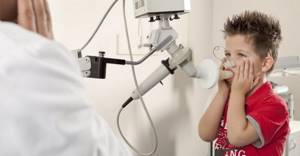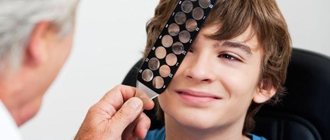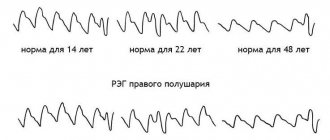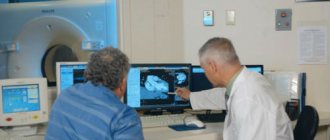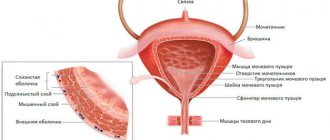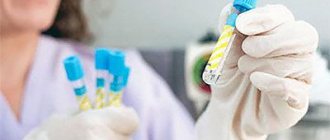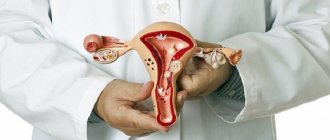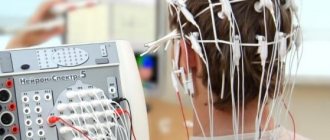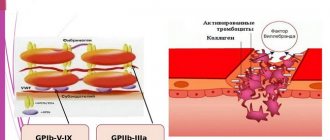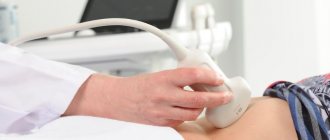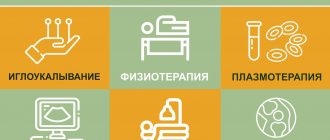Pulmonary diseases are becoming more widespread, and every year the number of people with complaints of respiratory dysfunction is increasing. To get an idea of the nature and cause of deviations and to collect information for treatment, doctors prescribe a special examination - spirometry, also called spirography.
This is a non-invasive test that assesses lung volume, determines inhalation-exhalation rate, and identifies ventilation failure and obstruction. It is carried out using a special device - a spirograph. It can be mechanical, water, but today computer models that accurately record data are more common. The most innovative devices are plethysmographs, comfortable cabins with seats and ultra-sensitive sensors.
The standard and widespread diagnostic method is completely painless and well tolerated by patients. The procedure is carried out quickly, quite comfortably, and is approved for adults and children over the age of six years.
Objectives of the study
The analysis must be carried out in case of any breathing disorders, complaints and problems. It is prescribed for diagnostic purposes, for prevention, and timely detection of pathologies. This is a mandatory component of a general clinical examination, which should be carried out every six months to a year, and more often for people at risk. It includes smokers, patients living in regions with polluted air, working in dusty rooms, in hazardous industries, and having a hereditary predisposition to pulmonary pathologies.
Most often, spirometry is prescribed for bronchial asthma and suspicions of it, but this is not the only purpose of the study. Besides her, the doctor:
- assesses the general condition of the respiratory organs, cardiovascular system and the indicators that characterize it;
- identifies COPD (chronic pulmonary disease), as well as various pulmonary and bronchial disorders, analyzes their nature and severity;
- confirms or refutes the results of other studies - for example, radiographic studies;
- monitors how effective the therapy that is carried out at the time of diagnosis or prescribed in the past is, makes a prognosis of the course of the disease and the patient’s condition;
- studies the patient’s reaction to provocative tests;
- assesses the feasibility of surgical intervention and carries out postoperative monitoring of the patient over time;
- collects data for medical and social examinations, prepares the patient for examinations and treatment measures that should be carried out in the future, etc.
The procedure is also useful for teaching proper breathing and strengthening this skill.
Reviews
Reviews from patients who completed this study are generally good. They note that spirometry is highly informative; the procedure is not expensive, but at the same time simple and financially accessible.
- “... I went through this procedure before, during and after treatment. Each time it was clearly visible on the graph what was wrong and what was changing for the better. I did it once using Salbutamol. But, unfortunately, I was allergic to it. And the procedure itself is simple and useful.”
- “...My daughter was examined. The procedure is necessary, it is easy to undergo, does not harm the body in any way and is cheap, the result is immediately obvious. However, problems arose with the fact that my daughter coughed and could not always accurately follow the doctor’s commands. But we seem to have managed it."
- “... Spirometry was performed several times during the prof. examinations during study. Sometimes I retook the tests several times, but in the end everything turned out to be normal.”
General information about the procedure
Spirography is widely used in pulmonology, allergology, and cardiology. It is prescribed by specialized specialists, to whom the patient is referred by a general practitioner after basic laboratory diagnostics.
Spirometry is performed in a medical office equipped with a spirograph. The two main methods of implementation are bronchodilator and provocative tests. In the first case, the doctor evaluates the dynamics before and after taking the drug that dilates the bronchi. In the second, the patient is given physical activity or a drug that provokes bronchial spasm, which occurs only in asthmatics. This option is carried out if no obvious violations or complaints are identified.
This is a safe study, there are practically no risks of deviations from normal conduct. However, it is necessary to exclude manifestations of excitement - tremors of the limbs, rapid breathing, heartbeat, they distort the indicators. Very rarely, during spirography, the patient experiences a severe coughing attack, but it is quickly stopped by the medical staff nearby.
A spirograph is a diagnostic equipment with a mouthpiece that a person holds with his mouth and sensors that respond to the intensity of the air flow when exhaling. The characteristics are processed by the device’s computer system, which converts them into digital format. The doctor takes readings at maximum exhalation after maximum inhalation, making conclusions adjusted for equipment settings, its errors and distortions. These are caused by violations and errors of the patient during the procedure:
- breathing through the nose and weakly grasping the mouthpiece, which causes excess air to enter the mouth, distorting the result of the study;
- incomplete, insufficiently deep or premature inspiration;
- pursed lips, clenched teeth;
- insufficient effort on exhalation, its short duration;
- cough and other errors indicated by the doctor.
The result of the study is a spirogram, from the image on which the person’s condition is determined. For ease of use, the indicators are separately deciphered and compared with the norm.
Follicle persistence
Persistent follicle is a condition in which the follicle matures to the desired size, but its rupture and, as a result, ovulation does not occur. As a result, the egg cannot be fertilized and pregnancy does not occur. That is, a persistent follicle is, in fact, a follicle that did not rupture in time.
It lasts about 10 days of the cycle, and then menstruation occurs. In some cases, a significant delay in menstruation is possible (up to 45 days), while the follicle itself often undergoes cystic degeneration.
The cause of this pathology is hormonal imbalance.
Indications and contraindications
Most often, spirography is prescribed when the patient complains of shortness of breath, cough, or other deviations from normal breathing. They are also sent for examination if disturbances in gas exchange are detected based on the results of a blood test - if the oxygen or CO2 content in it is beyond the permissible values. Testing is also prescribed for allergic rhinitis, restrictive respiratory failure, obstructive pathologies associated with pulmonary and bronchial diseases - laryngitis, asthma, tumors.
As a preparatory measure, spirometry is informative before bronchoscopy, examinations to diagnose the nature of pulmonary pathology, and determine the ventilation capacity of the lungs. It is regularly prescribed to patients at risk, people with a tendency to seasonal allergies. The study is also carried out to assess general health.
Non-invasive examination has few contraindications and limitations. Spirography is excluded for patients who have:
- heart attack - spirometry is postponed for at least three months;
- aneurysm, aortic dissection;
- hypertensive crisis, uncontrolled arterial hypertension;
- pulmonary hemorrhage;
- pneumothorax, significant insufficiency of the leg venous valves, stroke and other diseases.
The examination is postponed if the patient has recently undergone surgery. In case of ophthalmological or intracavitary nature, you need to wait about six weeks, for interventions on the chest - at least a month.
1.Diseases of the respiratory system
Diseases of the respiratory system are quite common. Bad habits, viruses and infections, polluted city air, and a sedentary lifestyle are serious risk factors for the breathing of modern people. Disorders of respiratory function in an acute course lead a person to a pulmonologist, but latent forms of this pathology are becoming more and more common.
A prolonged cough, sputum discharge in the morning, and shortness of breath can manifest themselves for years and be perceived by a person as normal. In this case, pulmonary symptoms can be a sign of dangerous diseases. Sometimes it is possible to identify and assess the severity of respiratory disorders only through special studies. Only thorough diagnostic data allows us to understand the causes of breathing problems, make an accurate diagnosis and prescribe effective treatment. The most general idea of the nature of deviations from the norm in the function of external respiration can be obtained by spirometry - a study aimed at assessing lung capacity, inhalation and exhalation rates, the degree of ventilation insufficiency and obstruction.
A must read! Help with hospitalization and treatment!
Preparation for spirometry and examination
Preparation is important for the accuracy of the result and the ability to use it for the correct diagnosis and choice of treatment method. It should be carried out after a thorough examination by a doctor and study of the hospital record. To minimize errors in indicators, the day before the manipulations it is necessary to exclude active physical activity, intense cardio training, and strength exercises.
2-3 hours before the start of the procedure, you should not eat, smoke, drink coffee, tea, energy drinks or other stimulating drinks. On the day of manipulation, it is recommended to stop taking antihistamines and medications that dilate the bronchi; if this is not possible, make an adjustment for the result.
It is advisable to arrive at the treatment room 20-30 minutes in advance to calm your breathing, relax, and warm up if it’s cold outside. It is recommended to wear loose clothing that does not impede breathing - without tight ties and belts, oppressive jewelry, or parts that tighten the chest. Before spirography, the patient relaxes in a chair for 15-20 minutes and listens to instructions.
Usually the examination is carried out while sitting, but if you feel unwell, weak, or are elderly, the person can lie down. The patient straightens his back, lifts his chin and places his hands on the armrests of the chair. Further:
- A clamp is placed on the patient’s nose so that readings are taken only from mouth breathing, without excess air;
- the doctor places a disposable mouthpiece in the patient’s mouth, which must be tightly wrapped around the lips and slightly pressed with the teeth;
- a spirograph is connected to the mouthpiece through a tube and the device is turned on;
- the patient breathes deeply for some time, then follows the doctor’s instructions - inhale and exhale at the maximum, at certain intervals, etc.;
- if necessary, the manipulations are repeated to obtain an accurate average value.
Usually all manipulations take up to half an hour. After the standard procedure, the doctor can conduct a second one, with a bronchodilator or a provoking test, and prescribe peak flow testing - a home test using a monitoring portable spirograph.
Recommendations
There are other recommendations for preparing for spirometry, namely:
- Stop smoking before the procedure.
- You should not drink tonic drinks on the eve of the examination.
- Drinking alcohol before spirometry is also prohibited.
- Sometimes you may need to stop taking certain medications.
- Clothing during the procedure should not hinder movement or interfere with breathing.
- Before the procedure, the doctor is required to measure the patient’s height and weight, as these indicators are important for assessing the results of the study.
- Before starting the procedure, you must be at rest for about 15 minutes, so you should arrive early. Breathing should be calm.
Spirometry is performed on an outpatient basis. Different methods and types of research require different sequences of actions. The patient's age and general health may also influence the steps taken during the examination. If we are talking about performing spirometry on a child, then creating comfortable conditions is considered a prerequisite so that the child does not experience fear and anxiety. Otherwise, the indicators may be blurred.
Indicators and interpretation of spirometry results
Key indicators of spirometry are vital capacity of the lungs, including forced capacity (VC and FVC). Vital capacity reflects the maximum amount of air that can fit in the lungs after exhalation to the end. The parameter has three volume components - respiratory, reserve during inhalation and reserve during exhalation, with standard values of 0.5 thousand cubic meters. cm, 1.5 thousand cubic cm and 1.5 thousand cubic cm. cm respectively. Characteristics are measured during quiet breathing. Normally, vital capacity is about 3.5 thousand cubic meters. cm for an adult. FVC is the difference between the volume of air at the beginning and end point of the fastest and most forceful exhalation.
Also important is the volume of forced expiration during the first second of the examination - FEV1. If you divide FVC by this indicator, you get the Tiffno percentage index, which characterizes airway patency. Normally it is between 70% and 75%. Other significant characteristics:
- the volume of air that a person can inhale after a full inhalation and exhale after a maximum exhalation - in the first case, the norm is considered to be 1.-1.5 liters, in the second 1-1.5 liters;
- breathing rate per 60 sec. - it’s normal to do 10-20 movements;
- total lung capacity (on average 5-7 l), etc.
When deciphering the examination indicators, it is important to take into account the age, condition of the patient and make adjustments for the category and existing diseases. Therefore, the qualifications of doctors and the level of diagnostic equipment come to the fore. The diagnostic center of the family clinic “Zdorovye” conducts spirometry using modern equipment. Our experienced doctors will help you properly prepare for the examination and competently evaluate and interpret its results.
Is it possible to do spirography for children?
Spirography can also be done for children from 5 years old. True, it happens that it is difficult to explain to a child how to breathe correctly, in this case it is better to double-check the results.
By the way, our sanatorium even accepts babies under one year old! There are specially designed children's programs. We have already told you why sanatorium treatment is important even for the little ones.
Now we understand more about the prevention of all kinds of diseases, and about spirography and what kind of procedure it is.
